
foreword | Historical Narratives | Resources | Links | Contact
JAY'S TREATY
History is a study of political survival.
The new year 1794 was a crucial one for Upper Canada. The little colony was transfixed with anxious despair and apprehension. Frontier fear was reflected in an advertisement in Newark's Upper Canada Gazette. It called for "gentlemen volunteers to enlist in His Majesty's 5th Regiment of Foot garrisoned at Fort Niagara. Men fit for service between "the ages of 16 and 40 and not less than 5 ft. 5 in. high," were invited to join the army. Recruits were also needed for the Queen's Rangers, but they could be one-half inch shorter.
Enlistment was required because Anglo-American relations were at an all-time low and tensions at an all-time high. The United States teetered on the brink of war with Britain and few saw any way to avoid it. Despite his strenuous objection to British occupation of forts on U.S. soil ten years after signing the treaty in 1783, President George Washington thought war with Britain would be catastrophic for his country. Over outraged objections from many sources, Washington sought a solution by sending John Jay, his own personal envoy extraordinaire, to London in a last-ditch attempt to negotiate settlement of a number of outstanding issues. These included evacuation of the forts and the payment of compensation for seizure of ships and slaves during the revolution.
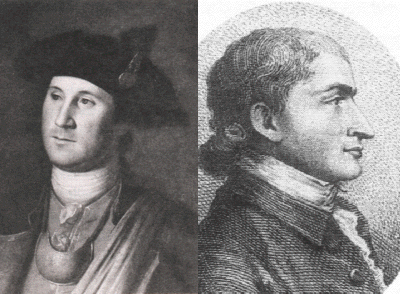 |
|
George Washington & John Jay |
Washington's decision initiated a drumfire of debate in press and public for his action was not widely supported by American politicians. It was charged that the mission was intended to"court England's favour" and according to Thomas Jefferson "degrade our character."
Supporters of Washington's decision believed that John Jay, Chief Justice of the United States' Supreme Court, was a wise choice. This experienced peacemaker had been chief negotiator at the Peace of Paris which ended the American Revolution. He was patient and purposeful, a man of judgement, common sense and character, who was a fine listener with a good memory. He was also opinionated, long-winded and full of himself.
Governor Simcoe was skeptical from the start.
In His Own Words
"The Americans so overrate themselves that Mr. Jay's task will be fruitless."
Other residents of Upper Canada were less pessimistic and expressed the hope that Jay would return with an olive branch in his hand because they knew war would be ruinous for Upper Canada.
Jay, who was appointed by Washington on April 16, 1794, believed
In His Own Words"A little good-natured wisdom did more in politics than slippery craft. I will hope for the best and prepare for the worst."
Jay landed at Falmouth on June 8th, 1794 and met with Britain's foreign secretary, Lord Grenville, on June 20th. He was received patiently and politely by Grenville, whom he declared to be fair and candid with impressive character and manners. Grenville reciprocated these sentiments and held Jay in high esteem and respect. Negotiations were long and difficult and the prolonged discussions caused impatience in America.
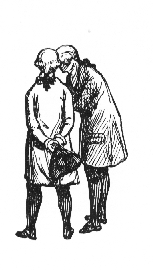 |
While he was frustrated himself with the lengthy delays, Jay managed to maintain the fine line between pressing and procrastination. His perseverance and patience paid off and the Treaty of Amity, Commerce and Navigation was finally signed in London on November 19, 1794.
The timing of the treaty was opportune for it followed by a few months the American victory at Fallen Timbers. If Britain had not agreed to abandon the western posts the buoyantly boisterous Americans would undoubtedly have taken them following the defeat of the western tribes. That would have meant war with Britain.
Treaty Terms - By June 1st, 1796 Britain would withdraw from the northwest posts on United States territory: [Michilimackinac, Detroit, Sandusky, Presqu'le (Erie), Niagara, Oswego and Oswegatchie (Ogdensburg)];
- American vessels were given limited rights to trade with the West Indies;
- Some debts were paid to compensate for seized vessels: 600,000 pounds by the United States; 1.2 million pounds by Britain;
- Commissions were to settle boundary disputes like New Brunswick/Maine;
- Trade was facilitated between the Canadas and the United States;
- All debtors and felons were to be exchanged.
Americans fully anticipated that they would get the better of the treat, and when it fell short of their optimistic expectations they were indignantly outraged. Many felt Jay had failed miserably. Supported more in the North than in the South the treaty was found to be barely acceptable overall and was ratified by the Senate by exactly 2/3 of its members the minimum required. It was passed without publishing its contents for as John Adams informed his wife, "mum, mum, mum was the word."
In the very first scoop of any American newspaper the treaty's terms were leaked and revealled amid an uproar of rage and discontent. The paper on which "the treaty was written was called a piece of shame."
 |
Jay was accused of having betrayed his country by negotiating a servile treaty with Britain's monarch. Jay's name became the subject of punning toasts such as, "clipped wings and lame legs" and he was burned in effigy in many states. He claimed he could have walked the entire eastern seabooard at night and had his way illuminated by protesters burning him in effigy.
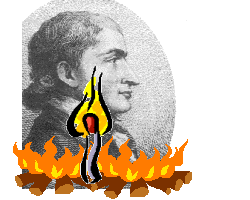 |
Editors and orators caled Jay's Treaty "a pact with the British satan." They vented their wrath on Washington as well vilifying his name as never before. Thomas Jefferson joined in saying of Washington, "a curse on his virture, they have undone his country. He is a quasi-senile front man for the Federalist conspiracy." Jay told Washington, "I have gained peace; to do more was impossible."
While Washington himself was disappointed with the outcome he supported the treaty to keep the peace. "At present the cry against the treaty is like that against a mad dog with everyone running it down." He complained the Republican campaign against it was "a blatantly partisan effort masquerading as a noble cause." Despite the curse "that any hand wither that signs such a treaty," Washington signed it on June 25, 1795 after it was passed by Congress by the slim majority of 51 to 48.
While much maligned in the United States the treaty had a very positive impact on Upper Canada. It hastened the building of military roads connecting Amherstburg, London, Niagara, York and Kingston. Fort George was constructed to compensate for the loss of Fort Niagara. Trade and travel were facilitated when the portage on the west side of the Niagara River was quickly constructed. Most important of all it brought peace to the pioneer settlements.
Fort Niagara was turned over to American troops at sunset on August 10, 1796. American newspapers complimented the British officers for their kindness in leaving extensive gardens ready to be harvested as well as a quantity of stores that included a year's supply of whiskey. The British officer in charge of the turnover was Captain Roger Hale Sheaffe who according to one American officer was "very polite and attentive."
During Fort Niagara's history it had flown three flags, a fact to which a speaker at the 1896 centennial celebration of the British evacuation made an immodest reference. "The fragile fleur de lis of the French vanished and the triple cross waved over Fort Niagara until 100 years ago, then it gave way to a fairer flag."
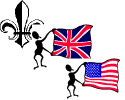 |
Following the signing of Jay's Treaty Simcoe's imperative task was to reconcile the Aboriginals to the fact that the treaty had ignored them. Simcoe sought to get their "peaceful acquiescence" to what amounted to British abandonment of the Natives and the surrender of their land.
While some sachems were desperately disappointed that nothing in the treaty protected them and their land, others recognized that they had little choice but to agree to its terms by which the Americans became their new protectors. A few Sachems refused to accept its terms and they and their people withdrew further into what would soon become Michigan. Fifteen years later they were forced to make another unsuccessful stand against the military might of the United States in a vain attempt to stem the unstoppable flood of white settlement.
The hope of the Treaty's negotiators was clearly expressed in its opening clause: "There shall be a firm, inviolable and universal peace and a true and sincere friendship between His Britannic Majesty, his heirs and successors and the United States of America without exception of persons and places."
In a letter to Grenville Jay stated
In His Own Words"To use an Indian figure of speech may the hatchet be buried forever and with it all the animosities which sharpened and threatened to redden it."
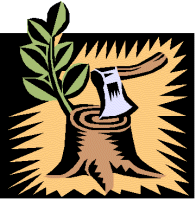 |
They buried the hatchet but not too deeply for eighteen years later it was uncovered and carried into battle when James Madison, President of the United States, declared war on Britain on June 18th, 1812.
Copyright © 2013 Website Administrator